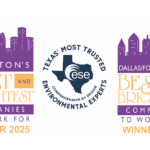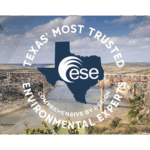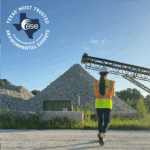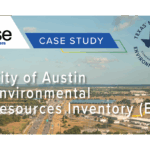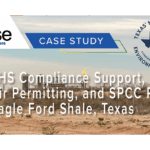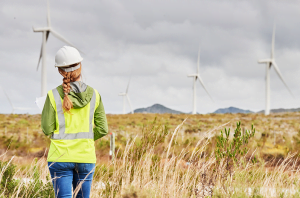
The Celina Phase 2 Environmental Site Assessment (ESA) is an essential process that plays a pivotal role in evaluating and understanding potential environmental risks associated with a property in Celina, Texas. In this article, we will delve into the purpose, importance, key components, process, regulatory framework, potential challenges, and the vital role of environmental professionals in this site assessment procedure.
Understanding the Purpose of Phase 2 Environmental Site Assessment
Phase 2 Environmental Site Assessment (ESA) plays a vital role in the evaluation and identification of potential contamination on a property or site. Building upon the initial Phase 1 ESA, which involves a review of historical records and a physical inspection of the site, Phase 2 ESA takes a more comprehensive approach. It involves extensive sampling and laboratory analysis to determine the presence and extent of hazardous substances or pollutants.
Importance of Phase 2 Environmental Site Assessment
Phase 2 ESA holds immense importance for various reasons. Firstly, it serves as a critical tool in identifying potential risks to human health and the environment. This information is invaluable when making informed decisions regarding property transactions, development projects, or any activities that might involve potential exposure to contaminants. By conducting a Phase 2 ESA, stakeholders can gain a deeper understanding of the site’s environmental conditions and make well-informed decisions to protect both people and the planet.
Furthermore, Phase 2 ESA plays a crucial role in planning appropriate mitigation and remediation strategies. Once potential contamination is identified, it becomes essential to take necessary actions to minimize or eliminate the associated risks. The data collected during the Phase 2 ESA aids in determining the extent of contamination and provides a foundation for developing effective remediation plans. This ensures that any necessary actions taken are targeted and efficient, leading to a safer and healthier environment.
Key Components of Phase 2 Environmental Site Assessment
A Phase 2 ESA typically involves three primary components:
- Initial Site Inspection and Data Review: Environmental professionals conduct a thorough site inspection, visually examining soil, groundwater, and surface water conditions. This inspection helps in identifying any visible signs of contamination and potential sources. Additionally, historical records and available data are reviewed to gain insights into the site’s past uses, potential sources of contamination, and any previous remediation efforts that have taken place.
- Sampling and Laboratory Analysis: Environmental samples, such as soil, groundwater, or surface water, are collected at designated locations based on the findings of the initial site inspection. These samples are carefully collected following established protocols to ensure accuracy and reliability. Once collected, the samples are sent to accredited laboratories for comprehensive analysis. The laboratory analysis involves sophisticated techniques and equipment to determine the presence and concentration of hazardous substances or pollutants. This step provides crucial data that forms the basis for evaluating potential risks and determining the need for further action.
- Evaluation of Findings and Risk Assessment: Based on the laboratory analysis, the collected data is evaluated to assess any risks posed by the identified contaminants. This involves comparing the results with regulatory standards and guidelines to determine if further actions, such as remediation, are necessary. The risk assessment process takes into account various factors, including the nature and concentration of contaminants, potential exposure pathways, and the sensitivity of the surrounding environment. This thorough evaluation ensures that appropriate measures are taken to protect human health and the environment.
By conducting a Phase 2 ESA, stakeholders gain a comprehensive understanding of the environmental conditions of a site. This knowledge is crucial for making informed decisions, implementing effective mitigation strategies, and ensuring the long-term sustainability of the site. With the insights provided by a Phase 2 ESA, stakeholders can move forward with confidence, knowing that they have taken the necessary steps to protect both people and the environment.
The Process of Phase 2 Environmental Site Assessment in Celina
Initial Site Inspection and Data Review
In Celina, the Phase 2 ESA begins with a comprehensive site inspection conducted by qualified environmental professionals. During this inspection, they investigate the overall site condition, including potential areas of concern and any observed signs of contamination. They also review historical records, including past land use and ownership information, environmental permits, and spill reports, to identify potential contamination sources.
Sampling and Laboratory Analysis
Following the site inspection, environmental professionals proceed with the collection of environmental samples for laboratory analysis. These samples are carefully taken from designated areas, considering factors such as potential contamination sources and exposure pathways. The collected samples are then submitted to accredited laboratories for analysis of hazardous substances or pollutants. This analysis provides crucial data regarding the presence and extent of contamination on the site.
Evaluation of Findings and Risk Assessment
Once the laboratory analysis is complete, environmental professionals evaluate the findings to determine the potential risks associated with the identified contaminants. This evaluation involves comparing the results with regulatory standards and guidelines established by federal, state, and local authorities. By conducting a risk assessment, they can establish if remedial actions are necessary to protect human health and the environment.
Regulatory Framework for Environmental Site Assessments
Federal and State Regulations
Environmental site assessments, including Phase 2 ESA, are subject to regulations at both federal and state levels. The United States Environmental Protection Agency (EPA) provides guidelines and standards for conducting such assessments. Additionally, each state may have its specific requirements and regulations that environmental professionals need to adhere to during these assessments.
Compliance with Local Celina Regulations
In Celina, environmental site assessments must comply with local regulations set forth by the city or county authorities. These regulations ensure that site assessments are conducted in a manner that aligns with the unique environmental considerations of the area. Compliance with these regulations helps safeguard the local environment and the community’s well-being.
Potential Challenges in Phase 2 Environmental Site Assessment
Dealing with Contaminated Sites
One of the significant challenges during Phase 2 ESA is dealing with contaminated sites. In some cases, the presence of hazardous substances or pollutants necessitates extensive remediation to restore the site to safe and acceptable levels. Environmental professionals work closely with property owners and regulatory authorities to develop and implement effective mitigation and remediation strategies that address the specific contaminant(s) present on the site.
Mitigation and Remediation Strategies
Environmental professionals utilize various mitigation and remediation strategies to address contamination issues identified during the Phase 2 ESA. These strategies may include excavation and removal of contaminated soil, installation of barriers or containment systems, bioremediation techniques, or other appropriate methodologies. The selection of the most suitable strategy depends on the type and extent of contamination, as well as the site-specific factors.
The Role of Environmental Professionals in Site Assessment
Qualifications and Responsibilities of Environmental Professionals
Environmental professionals involved in Phase 2 ESA possess the necessary qualifications, experience, and expertise to conduct comprehensive site assessments. They have knowledge of applicable regulations, sampling techniques, laboratory analysis, and risk assessment methodologies. Their responsibility includes ensuring accurate data collection, analysis, interpretation, and preparation of reports that document the findings and recommendations.
Collaboration with Other Stakeholders
Environmental professionals also play a critical role in collaborating with other stakeholders involved in property transactions or development projects. They provide expertise and guidance to property owners, developers, regulatory agencies, and potential buyers to ensure that environmental risks are effectively identified, understood, and addressed. Their involvement promotes responsible environmental practices and helps protect public health and the environment.
In conclusion, the Celina Phase 2 Environmental Site Assessment is a comprehensive process that evaluates and addresses potential environmental risks associated with a property in Celina, Texas. This assessment involves various stages, including an initial site inspection, sampling and laboratory analysis, and evaluation of the findings. It operates within a regulatory framework established by federal, state, and local authorities. Environmental professionals play a crucial role in conducting Phase 2 ESA, collaborating with stakeholders, and implementing mitigation and remediation strategies. Through their expertise, they contribute to protecting human health and the environment in the Celina community.
If you’re facing environmental challenges or require a Phase 2 Environmental Site Assessment in Celina or beyond, look no further than ESE Partners. Our team of seasoned environmental engineers and scientists is dedicated to responsibly moving your business forward through comprehensive environmental problem-solving. Whether you need assistance with due diligence, remediation, or compliance, we are equipped to provide you with the expert support necessary for your project’s success. With our extensive experience and strategic presence in major Texas markets, ESE Partners is your go-to source for environmental services that are both innovative and sustainable. Don’t let regulatory changes slow you down; we’re here to help expedite your DA permit applications and requests with the USACE, especially in light of the recent review process updates in the Galveston County District. Take the first step towards ensuring your property transactions and environmental projects are in capable hands. Request A Proposal today and let ESE Partners guide you to environmental compliance and success.

